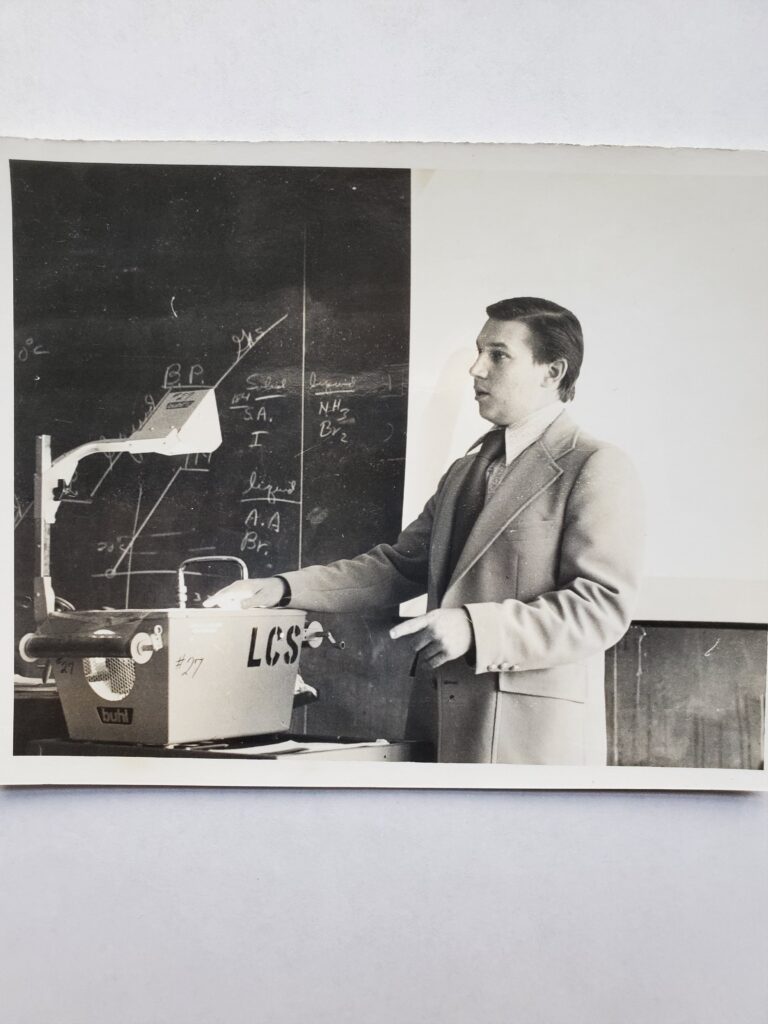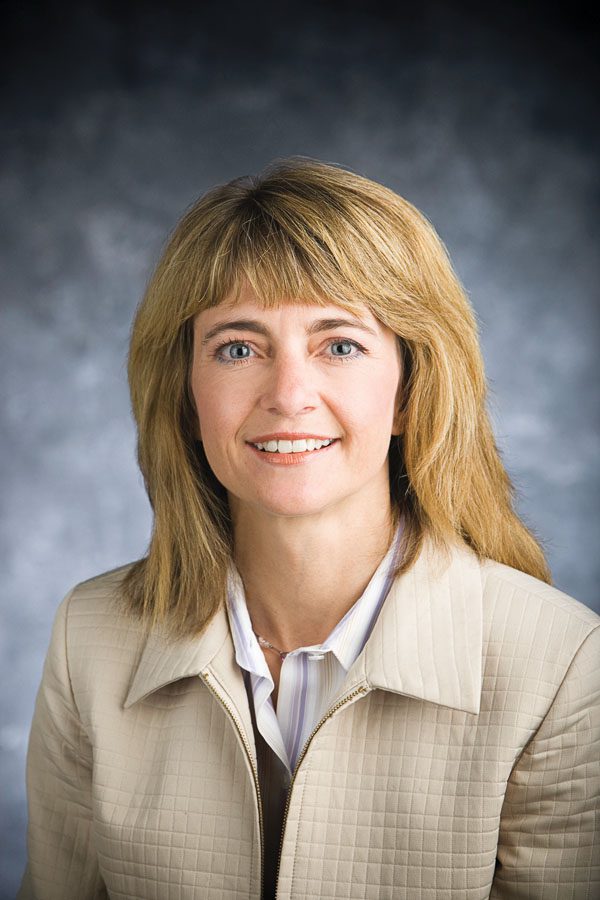Nicholas Claps grew up in the middle of New York, the middle son of not-quite middle-class parents.
His dad Julius measured inseams in a factory that made men’s suits.
His mom Helen – a beautician by trade – stayed home with their three boys on a suburban street filled with cookie cutter houses in Syracuse.
The couple’s oldest son would become a beautician and their youngest son would style hair, too.
Not Nick. Nick thought he might want to go to college and study science instead. He thought he might want to be a teacher.

When a small private college from the Panhandle of Nebraska came recruiting students — often sending its president back east to do the convincing — Mom and Dad Claps came to listen.
And in September 1967, their son was on a plane, heading to a fledgling college 1,600 miles away in sugar beet country, in a state he knew only from geography class.
Nicholas Claps settled into sleepy Scottsbluff, a clean-cut kid who’d overcome a stutter.
Four years later, he graduated from Hiram Scott College, named for the fur-trapping mountain man who died near the bluffs in the early 1800s.
A few years later, Claps returned home to Syracuse. He joined the Air Force. He married a girl he’d met in the fourth grade and landed a job as a science teacher.

He and Mary Beth bought a starter house. Then they started to follow the financial advice of a Nebraska guy.
“We have the same philosophy as Warren Buffett,” said Claps, 76. “Buy what you need and save the rest.”
He and Mary Beth never had children. And they were so successful at imitating Warren that, a few years ago, they wrote a book, “Lessons and Suggestions for Building Your Wealth.”
They gave a copy to their 19 nieces and nephews.
“It’s advice we wish someone had given us when we were young,” Claps said.
All of the paperback’s profits go to the Nicholas J. and Mary B. Claps Scholarship Fund at the University of Nebraska Foundation.
A scholarship the couple calls: The New York to Nebraska Connection.
A scholarship that traces its roots to a long-forgotten college that couldn’t pay its bills and closed its doors just as Claps strolled out with his diploma, on his way to becoming the Millionaire Next Door.
***
Young Nick Claps settled into life at Hiram Scott.
He has few photos from those days; his memories as dusty as the Scotts Bluff County landscape.
But the more he talks, the more he remembers. He remembers living in the dorm with other young men, his floor filled with education majors.
“Everybody was buddy-buddy there.”

He remembers the quad and the cafeteria, chemistry and biology classes in a brand new building on the 275-acre campus north of town.
“The instructors always had their doors open to students.”
He remembers going home for the summer, trying to explain the place: “I’d tell Mary Beth, ‘If your car broke down in Scottsbluff, the first car to come by would stop to help.’”
He had a scale for the pace of life. New York City: maniacs. Syracuse: fast. Scottsbluff: snail.
“You could relax for a bit out there.”
During his student teaching days in nearby Gering, he and his classmates rented efficiency apartments. When he asked their landlady for a key, she pointed to hooks outside the doors, where the keys hung.
Claps laughs.
“No one locked their doors.”
Back home, he landed his first teaching job at a new high school in suburban Syracuse, impressing the principal with his transcript and besting a crop of Syracuse University grads.
“I was a happy-go-lucky teacher. I loved it.”
Mr. Claps, the science teacher, eventually became Mr. Claps, the insurance man, who became Mr. Claps, the financial planner.
Nick and Mary Beth upgraded from their starter house to a place with a two-car garage and laundry on the first floor. They invested wisely and spent wisely. They bought reliable cars with the help of Consumer Reports. When Nick turned 48, he retired. A few years later, Mary Beth followed.
The unassuming millionaires enjoyed life, traveling and reading and gardening, and they started contemplating the future.
Claps knew the University of Nebraska had purchased his failed college and turned it into an agricultural research center. He became a de facto Husker, joining alumni travel groups and connecting with the NU Foundation.
He unveiled his – and Mary Beth’s – idea in 1992: A scholarship for kids from upstate New York. The scholarship funds will start rolling out once Nick and Mary Beth have passed away.
The deal: Full tuition, plus room and board.
The hitch: The Empire State kids must attend school in the Cornhusker State.

The couple has tweaked the endowed fund over the decades, said Keith Napolitano, director of gift planning. Along the way, he’s gotten to know the man who adopted the university – and Nebraska – as his own.
“He loved his education here. He’s been successful in saving and wants to give that back.”
And New Yorkers do come to Nebraska for college; 85 of NU’s 49,560 students in 2022, a far cry from Iowa’s enrollment (1,084), but easily outpacing Delaware (8), Vermont (7), and Rhode Island (4).
The NU Foundation doled out more than $33 million from scholarship funds last fiscal year, money that went to 10,574 students, across five campuses. And it oversees 5,154 funds of all stripes.
Scholarships for nursing students, English majors, promising young people from Fairbury. Scholarships for non-traditional students, engineering students, non-traditional engineering students.

Scholarships for human rights minors and art majors and students interested in the military. Scholarships given in honor of parents, grandparents, children, quirky biology professors.
Scholarships for kids from this county or that, most of them, of course, Nebraska counties.
“Almost every scholarship has criteria,” said Dorothy Endacott, the foundation’s vice-president of marketing and communication. “His criteria just happens to be upstate New York.”
***
Six years after Hiram Scott enrolled its first students – Miss Cathi Hansen of Crawford and Miss Lenore Barta of Scottsbluff – the little college on the Oregon Trail collapsed like its namesake and died.
In its first year, the school enrolled more than 500 students; a few years later, 1,500. But soon enrollment dwindled and debts soared.
When Claps strode across the auditorium stage, a member of a graduating class of 53, he was unaware of the unfolding calamity.
The businessmen who’d touted the college six years earlier – Soon Scottsbluff will be known for more than sugar beets and cattle! – found themselves in a pickle, one shared by hundreds of small colleges of the era relying on tuition to pay the bills.
“When it folded eight months ago, the 30 faculty members scattered, like the students,” Time magazine wrote in May 1972. “Leaving behind nine vacant buildings, 5,000 unsold yearbooks, 75 microscopes, an airplane, $7,300,000 in debts and Dr. Weese.”
The magazine noted that Weese, the college’s final president, lived nearby and helped himself to the cafeteria’s abandoned rice supply.
“I’m getting pretty good with the dishwasher,” the Chaucer scholar told the magazine, “and I’m a pretty good cook, too, but you lose your steam.”
No local organizations seemed interested in the “slightly used” college, Time wrote, but trustees were at work trying to offload it to the National Rifle Association or the U.S. Chamber of Commerce for pennies on the dollar.
Instead, the University of Nebraska bought those 275 acres and the buildings planted on them. The Chadron Record dubbed the move a political boondoggle, berating Scottsbluff leaders for starting a college where none was needed and a power move by the university to expand its influence.
The reach remains, nearly a half-century later.
The University of Nebraska Panhandle Research and Extension Center chugs along in the red brick campus, employing 100, including professors, and welcoming visiting students throughout the year.
Hiram Scott earned some bragging rights. California Gov. Ronald Reagan stopped to visit, as did Gerald Ford and presidential candidate Robert Kennedy, the Scottsbluff Herald wrote in 2015.
It noted: “The college had a big impact on what had been an isolated rural town.”
Hiram Scott had enticed Forddy Anderson, who’d taken two teams to the Final Four, to coach the Scots, a feat that landed Anderson – and the college – in Sports Illustrated.
A Hiram Scott football player was drafted by the Baltimore Colts; hoops star Richie Moore had a short stint with the American Basketball Association’s Denver Rockets, today the Denver Nuggets.
The state’s “Singing Historian,” Robert Manley, the man who popularized “Beautiful Nebraska” taught there. Other East Coast transplants hung around and settled down, teaching school and raising families.
And then there was Nicholas J Claps, who lived his life by the book and then helped write a book, sharing his wisdom and wealth, hoping to coax a new generation of New Yorkers to the land where a kid from Syracuse launched his life.
Claps won’t see any of the dozens, or hundreds, or thousands of New Yorkers who will eventually attend Nebraska, because they won’t start pouring into the state until after he is gone. But he’s hopeful that those fast-talking, fast-moving students from back home will discover what he did.
“In Nebraska you get to see more — and enjoy more — at a slower pace.”




10 Comments
Interesting piece, but you might want to clarify what you mean by “Upstate New York.” As a Nebraskan who was raised in Buffalo, went to Colgate, and lived in Manhattan, I know Upstate New York as a vague term. Basically, it excludes Long Island and New York City and a few counties north of the city. I wanted to pass this along to NY friends and called the Foundation. A spokesperson said the Claps named several specific counties — I’m guessing probably around Syracuse. Also, the 84 New Yorkers at Nebraska public colleges seems like an odd number; I checked UNL undergrad geographic distribution and they only had four from New York State. Is the Claps scholarship just for undergrads? Is is just from proceeds from the book? That also seemed unlikely. Anyway, I enjoy Flatwater Free Press and hope this helps. Go Huskers — and Bills!
Great questions. 84 is correct — across five campuses…I have the breakdown somewhere in my notes! The book just supplements the funds they have already contributed (fund is endowed). And undergrads…don’t know if grad students are eligible. Thanks for reading and commenting.
Thank you Cindy! Loved this story. Your talent as a journalist is prodigious and I am delighted you are writing for The Flatwater Free Press.
Such a Nebraska story brimming with universal relatable wisdom and your inimitable style. Thank you!
Who knew? Not me, clearly, but I’m sure glad you did and this story did not go unreported. Very interesting and well written piece. Thanks.
Re his is the best article I’ve read in the last year!!!!!
Oh yay! And I hope you read a lot.
Cindy, I really enjoyed the article you wrote about Nicholas Claps who attended Hiram Scott college. I am from Scottsbluff and my mom worked for the president of the college for most of the time it was in existence. She knew Dr. Robert Manley. The article brought back a lot of my hometown memories. That college was a big deal for that town! Thanks for a great story!
Wow. I would have loved to see the campus in its glory days. Thanks for reading!
Cindy,
I stumbled across your article about my alma Mater, Hiram Scott College. Fo a lot of us this was a second chance at that college degree back in the mid ’60s when things were tough with the baby boomers hitting college. Your references were spot on and brought back some good memories.
Thank you,
I love that this was your school. I’m a lifelong Nebraskan and I’d never heard of it. Thanks for reading and commenting!